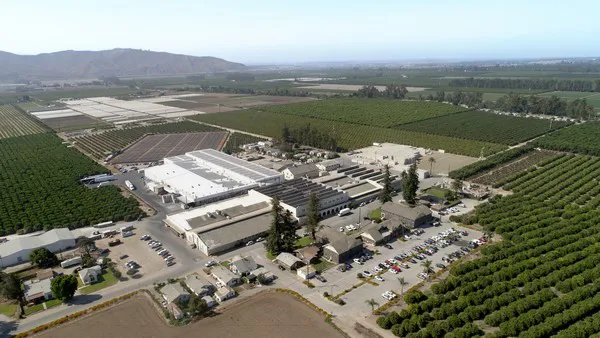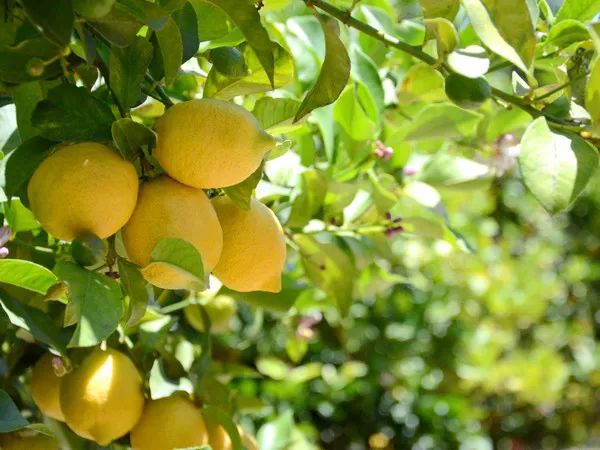California’s lemon growing regions are facing unique situations this season driven by common events of high, frequent precipitation and cooler temperatures. District 1, the San Juaquin Valley growing region, began harvest in late October and is now coming to an end. Rain amounts during the primary harvest window caused the lemons to naturally grow larger.
The frequency of storms delayed picking and prolonged time on tree perpetuating the size challenge. The weather conditions also impacted the grade of the fruit, reducing the percentage of fancy. “As a result, there has been downward price pressure on large size choice grade lemons”, said John Carter, Vice President of Citrus with Limoneira. “However, fancy grade lemons across sizes and smaller size choice grade lemons have noticed a price increase in the past four weeks as supplies have been relatively less abundant.”
 Limoneira's corporate headquarters.
Limoneira's corporate headquarters.
The early picks of District 2 (coastal region) were impacted similarly to District 1, but the picture looks different for the portion of the crop expected to be picked early to mid-summer. “We will see more diverse sizing during this period,” commented Carter. The rainfall came earlier within the season while fruit for the summer pick was developing. In addition, temperatures have remained cool, and the fruit has essentially been in an air-conditioned environment.
“Right now, temperatures are still in the high 60s with the 10-day outlook showing more of the same. We simply haven’t experienced high stress inducing temperatures since before November. These low temperatures will help District 2 with strength for summer,” shared Carter. It has been a unique spring as additional rain and snow events added to Southern California precipitation totals through May 4.
Lemons in District 3 typically begin harvest around late August to early September. “It’s difficult to provide a reliable estimate at this point as initial information has been mixed.”

Exports and imports
In addition to the US and Canada, Asia is a primary market for California lemons. “Demand from North America has been steady and demand from Asia started to rebound this winter. However, post-Covid demand isn’t up to the levels it was before,” Carter said. While California is still in the midst of its own season, imported fruit is starting to arrive in North America. Canada has received the first lemons from South Africa. The first arrivals from Argentina to US and Canada are beginning and volumes are expected to be similar or slightly higher compared to last year.
Chile’s arrivals to North America will start later in June and volumes are expected to increase compared to last year as the country is rebounding from cold weather last year. Mexico’s lemon season is expected to start at the end of July, early August. When asked how much competition is expected from the import season, Carter said “it will certainly be dynamic as there are global sourcing and market destinations in play. It ultimately depends on the sizing and the grade of fruit that arrives. A little too early to tell for now. Regardless of competition, we will look to do our part in promoting lemons as part of our “Catch the Citrus Wave™” campaign for the summer.”

 For more information:
For more information:
John Carter
Limoneira
Tel: +1 (805) 525-5541
JCarter@limoneira.com
www.limoneira.com
